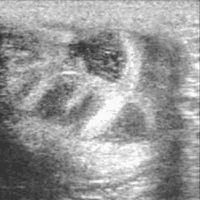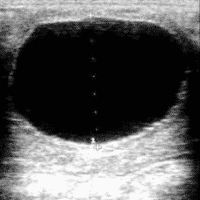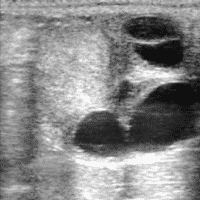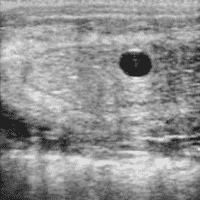Horses are seasonally polyoestrous and cycle when the daylight is long – spring and summer. A mare’s cycle is approximately three weeks in duration, and for two to eight days your mare is in oestrus (commonly referred to as ‘in season’ or ‘in heat’). This is when your mare is getting ready to ovulate, and it is the time for breeding. To find out when is the best day to breed your mare, watch her closely for signs of being in season, and have her examined by a veterinarian via rectal ultrasound.




The behavioural response is most accurate when presenting the mare to a stallion – teasing the mare. Some mares may also show heat behaviour to their usual paddock mates. A mare in season will be interested in the stallion, raise her tail, squat and urinate small amounts, and blink with her vulva. While your mare shows any signs of being in season, is the right time for ultrasound examination.
Rectal Ultrasound
A rectal ultrasound will give us more information about your mare’s cycle and reproductive health, so we can estimate the ovulation time and schedule an optimal time for breeding. For this examination we scan your mare’s uterus and both ovaries. During oestrus your mare is developing oedema in her uterus and forming a dominant follicle, getting ready to ovulate. This is the time we will breed your mare. After ovulation we find a corpus luteum on the ovary, which will last until the next oestrus, or persist if your mare is pregnant.
If your mare is not in season when doing the examination, we can help you bring her into oestrus and make a breeding plan. If your mare has just had a foal, she will come back into season approximately nine days later – this is known as a foal heat, and is usually not the ideal time for breeding. We can start your mare’s second heat approximately 3 weeks after foaling. Advise your veterinarian that you want to breed your mare after foaling and we can make a breeding plan.
Mares are made to have a foal every year and do not need time off. Their uterus recovers fast and gets ready for another foal. If your mare is in good condition and her foaling was uncomplicated, she can safely be put in foal again soon after birth.
health of the mare and foal, and avoid twin pregnancies.
Breeding Options
Artificial insemination is a common procedure in equine reproduction. We offer artificial insemination with fresh, chilled and frozen semen. With this procedure you may choose a stallion that is not available for live cover, far away, retired as a stud stallion or sadly not alive anymore. Further, it is a minimally invasive and safe procedure for your mare, and can optimise breeding success. Live cover is also an option to breed your mare, however handling two horses for breeding can be challenging and not always performed safely for horses or handlers. After breeding it is recommended to scan your mare again to ensure ovulation.
First Pregnancy Scan
After your mare is bred and the dominant follicle has ovulated, we will scan her for pregnancy 14-16 days after ovulation. This first pregnancy scan is important to confirm success, ensure the
If you have any questions about breeding, give us a call and our veterinarians are happy to give you advice for a successful breeding season.
